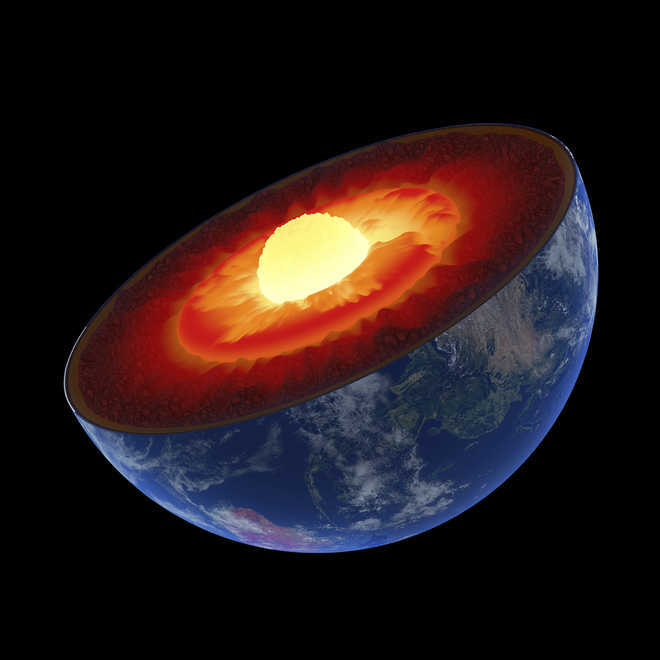
The variation in snow pile size—thinner in the eastern hemisphere and thicker in the western—explains the change in speed. Source: Thinkstock.
NEW YORK
The Earth's inner core could be covered by "snow" made of tiny particles of iron which are much heavier than any snowflake on Earth's surface, says a study.
These particles fall from the molten outer core and pile on top of the inner core, creating piles up to 200 miles (ca. 322 km) thick that cover the inner core, according to the study published online in the journal JGR Solid Earth.
The Earth's core can't be sampled, so scientists study it by recording and analysing signals from seismic waves (a type of energy wave) as they pass through the Earth.
However, aberrations between recent seismic wave data and the values that would be expected based on the current model of the Earth's core have raised questions.
The waves move more slowly than expected as they passed through the base of the outer core, and they move faster than expected when moving through the eastern hemisphere of the top inner core.
The study proposes the iron snow-capped core as an explanation for these aberrations.
"It's sort of bizarre thing to think about," said study co-author Nick Dygert, Assistant Professor at University of Tennessee who conducted the research during a postdoctoral fellowship at the University of Texas at Austin in the US.
"You have crystals within the outer core snowing down onto the inner core over a distance of several hundred kilometres," Dygert said.
The researchers point to the accumulated snow pack as the cause of the seismic aberrations. The slurry-like composition slows the seismic waves.
The variation in snow pile size—thinner in the eastern hemisphere and thicker in the western—explains the change in speed.
And given the core's influence over phenomena that affects the entire planet, from generating its magnetic field to radiating the heat that drives the movement of tectonic plates, understanding more about its composition and behaviour could help in understanding how these larger processes work.
The research confronts longstanding questions about the Earth's interior and could even help reveal more about how the Earth's core came to be, said Bruce Buffet, Professor at the University of California, Berkley who was not involved in the study. — IANS
Join Whatsapp Channel of The Tribune for latest updates.



























